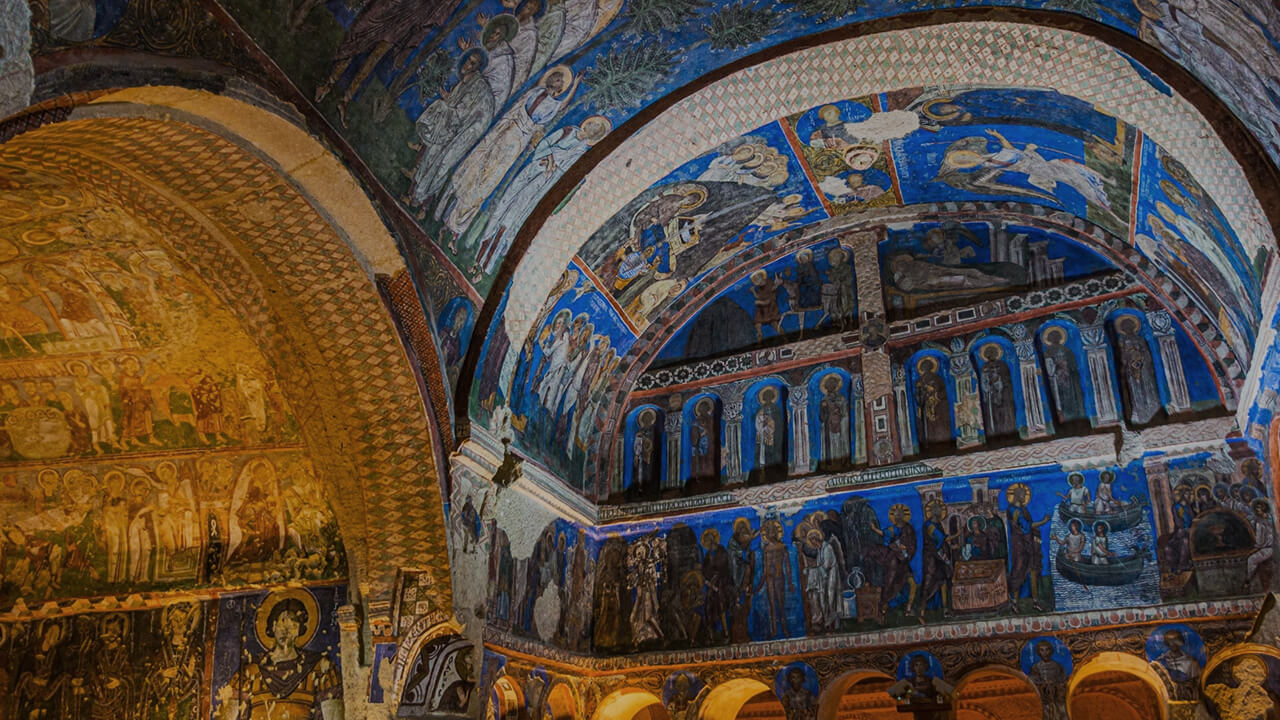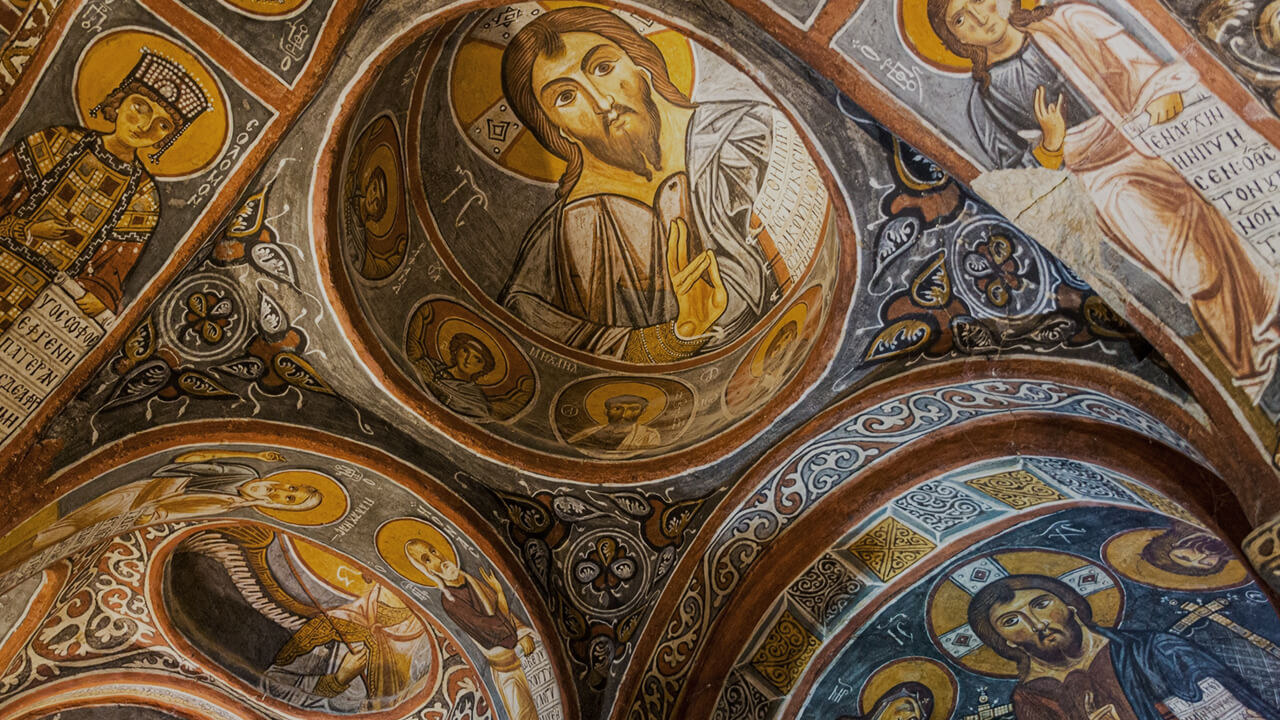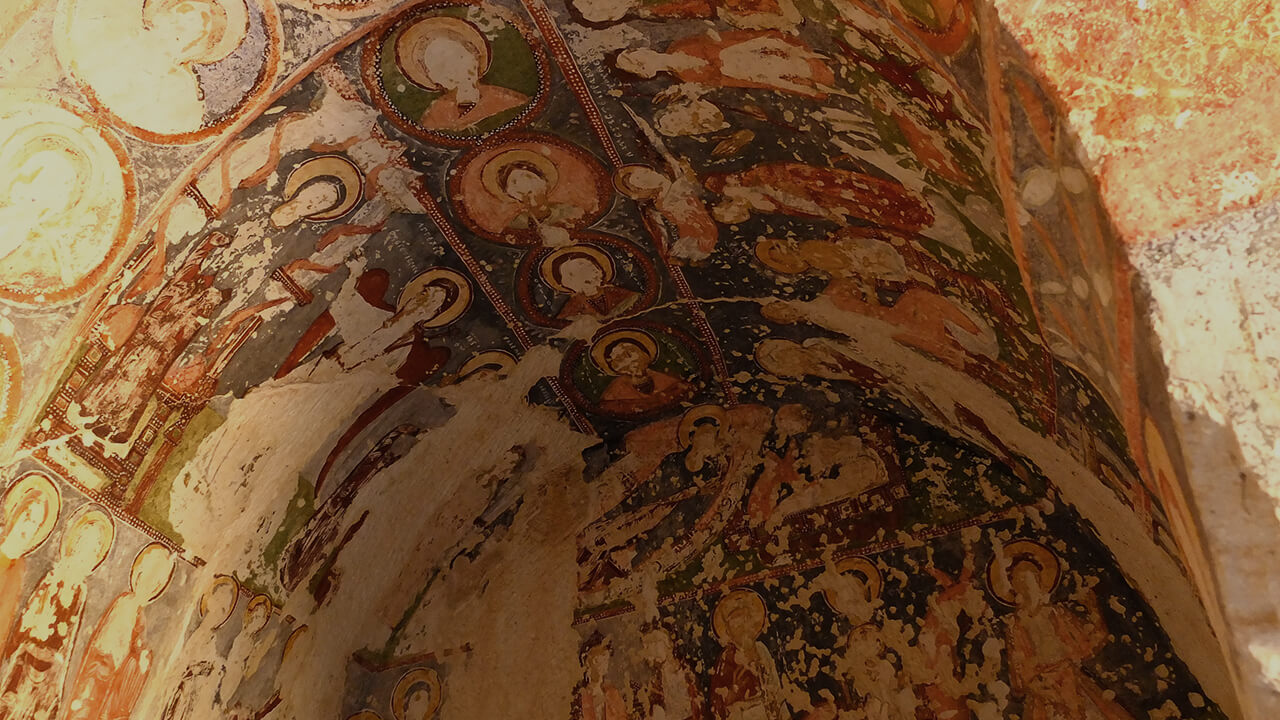
9.04.2023
5 Dakika
Hooray, the day that much of the world has been waiting for is here. Today is Easter! We are sure that most people think of eggs and bunnies when this day is mentioned. So you may have trouble associating the blog you are about to read with Easter, but we'll prove you wrong. When we tell you about the origins of Easter, you will surely better understand how it is related to the church frescoes in Cappadocia.
The history of Easter, celebrated by Christians, and of the Jewish Passover, from which it originated, is actually older than the Abrahamic religions. Nevertheless, let us follow the traces of these holidays in the history of the Abrahamic religions. As described in the Book of Exodus, one of the five books of the Torah, lambs are sacrificed in every family in place of the first male child, and this development is celebrated every year as Passover. For Christians, the festival is important because the crucifixion of Jesus Christ took place just before Passover. This is because Jesus is considered the sacrifice that takes away all the sins of humankind, just like the Passover lamb. These scenes associated with Easter are often depicted in church frescoes.
One might think that Cappadocia in Anatolia did not have much influence on the spread of a religion whose center was in Jerusalem, but the first Christians lived in this region to escape oppression and to worship freely. By the 4th century, the region had become a center of Christianity, with more than 600 churches carved in stone and decorated with impressive frescoes.
If you're ready, let's find out where you can see the beautiful frescoes, some of which depict the events leading up to Easter in the churches of Cappadocia!
The carved church in the Göreme Open Air Museum dates from the late 11th and early 12th centuries. Century. It is called the "Dark Church" because it receives little light through a small window in the narthex, and has preserved the beauty of its legendary frescoes. The church and the narthex are richly decorated with scenes from the Bible and the life cycle of Jesus Christ. In the frescoes, which also contain stories from the Torah, one can see how Passover inspired another important feast, Easter.
"The Deesis", "The Annunciation", "The Journey to Bethlehem", "Nativity", "The Baptism", "Transfiguration", "Entry into Jerusalem", "The Last Supper", "Judas' Betrayal", "Crucifixion", "The Descent of Jesus Christ into Hell", "The Women at the Empty Tomb", "The Ascension", "The Hospitality of the Prophet Abraham", and "Three Young Men in the Furnace of Fire" are some of the scenes depicted in the church.

The carved church in the Göreme Open Air Museum is the oldest known rock church in the region. The Tokalı Church fascinates its visitors with its frescoes covering the upper part of the vault and the walls and differs from other churches in the region by the dark blue color of its walls. The frescoes depict the life of Jesus Christ and scenes from the Torah, and one can trace the history of Christianity and discover the points connecting Passover and Easter.
"The Annunciation", "The Visitation", "The Journey to Bethlehem", "The Nativity", "The Massacre of the Innocents", "The Flight into Egypt", "The Calling of John the Baptist", "The Meeting of Jesus with John the Baptist", "The Baptism", "The Multiplication of the Loaves and Fishes", "The Installation of the Apostles", "The Healing of the Blind Man", "The Last Supper", "The Betrayal of Judas", "Jesus on the Road to Golgotha", "The Crucifixion", "The Burial", "The Descent of Jesus Christ into Hell" and "The Ascension" are some of the scenes that can be seen in the church's frescoes.

The church is located in the Göreme Open Air Museum and takes its name from the frescoes on its walls. The frescoes tell a story that revolves around four women. These four women, depicted on the walls of the church, are "sinners" and each of them is punished by the attack of snakes. The first of the frescoes depicting these women cannot be fully understood because it has been damaged, but the other women were found guilty for the following reasons: Being a mother who did not nurse her child, lying and being disobedient.
In addition to these frescoes, the Church of the Serpent also houses frescoes on the themes of Passover and Easter. "The Last Judgment", "The Entry into Jerusalem", "The Ascension", "The Last Supper", "The Crucifixion" and "The Deesis" are some of the scenes in the church.
